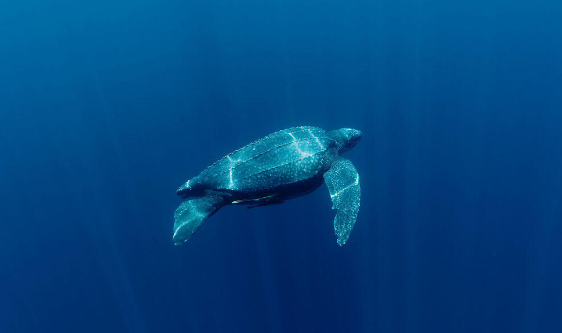The Importance of Endangered Species in 2023
Act on the Matter

May 25, 2023
Have you ever wondered what our major global issues are around the world? The Earth’s loss of biodiversity is one of the many. Biodiversity is the variety of plants and animals in an ecosystem. Animals need biodiversity in order to survive and reproduce. Recently, our biodiversity has been decreasing and there are various species newly introduced to the endangered list that have become dangerously close to extinction. Some of these endangered animals may not make it through the year of 2023.
Oliver Zoeller, a freshman at NBW, explained his thoughts on why animal extinction is such an issue in today’s society. “Animal extinction can be blamed on humans,” Zoeller said, “we eat their food, use their land, and destroy their homes.”
Today, extinction is commonly caused by humans and impelled by habitat destruction. Extinction is the termination of an organism or species. According to the IUNC Red List, “In the last 500 years, human activity is known to have forced 869 species to extinction.” Other causes of extinction include pollution, diseases, and habitat change. This has greatly affected our environment, causing there to be more endangered animals every year.
Shanna Bradley, a science teacher at NBW, shared her thoughts on animal extinction. “We lose the biodiversity that our planet is so known for,” Bradley said. “Each plant and animal has a specific use, and if we are losing them it’s just going to harm our planet and not give us as many resources.” Animal extinction has a great impact on animals and people, but also a large influence on our world because it can damage the populations of other species. Currently, there are ten endangered species that may be extinct by the end of the year, but here are three specifically.

One of the many endangered species is tigers. Endangered tigers include: the Bengal, Indochinese, Sumatran, Siberian, and the Malayan. More specifically, the Sumatra
n and Malayan tigers are now critically endangered due to the destruction of their environment, illegal wildlife trade, and poaching. It is estimated that there are only 3,500 tigers remaining in the world. In total, tigers have lost 95% of their habitats from human activity. Humans also take part in deforestation by clearing away land for agricultural expansion.

Along with this, the Bornean and Sumatran subspecies of orangutans are approaching extinction. Between the year 1999 and today, the Bornean species has lost over 100,000 orangutans and the Sumatran species lost over 7,000 orangutans around the world. The endangerment of this species is caused by human activity and forest degradation. Palm oil has also been a major drive of deforestation in some of our world’s most diverse ecosystems. Hunting, illegal logging, and mining are also factors that set part in the orangutan endangerment.

Not only are land-animals endangered, but there are also important marine animals that are close to extinction. In fact, there are only about 2,300 adult female leatherback turtles in the Pacific. Leatherback sea turtles are one of the most at risk animals of 2023. Leatherback sea turtles are migratory reptiles that travel and live around the Atlantic, Pacific, and Indian oceans. Their endangerment is primarily caused by bycatching. Bycatching is the unintentional catching of different types of species that harms animals and reduces their population. Bycatching can negatively affect species like dolphins, turtles, whales, and other fish.
Wondering how you can help? National Wildlife Refuges Association is a non-profit organization that aims to protect, promote, and enhance the world’s largest network, 850 million acres of land and water, that is restricted for wildlife conservation. Supporting and donating to this organization will only expand the horizon of the National Wildlife Refuges System.
According to the National Wildlife Refuges Association, “National wildlife refuges protect at least 700 bird species, 220 mammal species, 250 kinds of reptiles and amphibians, 1,000 species of fish, and countless invertebrates and plants — some 293 of which are threatened or endangered.” Along with this, each year the association generates about $2.4 billion in economic outputs and 35,000 jobs. Within their website, this foundation gives our community an option to donate money to endangered species around the world. All contributions make a difference and are helpful to supporting wildlife. There are three simple steps that you can take to donate: choose an amount to give, fill in your contact information, and complete the payment. There is no such thing as a small contribution, every donation counts!
Another way you can help endangered animals is contributing to the Endangered Species Act. This organization provides a structured way to protect endangered species and their habitats. Two federal agencies, U.S. Fish and Wildlife Service and the National Marine Fisheries Service, manage the implementation of the Act. These services consist of scientific researchers that are educated on different species habitats and what they need to survive. By donating to this organization, you will support, protect, and help endangered animals. This organization will only affect animals and people for the greater good.
Charlotte Ansaldi, a freshman at NBW, explained that, “people care too much about themselves which limits their willingness to acknowledge and learn about animals.”
It is important for our society to start acknowledging the endangered species list more than ever before because animals around the world are facing more challenges every day. Animals are critical for many different world aspects. If more animals become extinct, we will experience a loss of companionship and it will be more difficult to keep our ecosystems functional. Improvement and survival can start today, don’t hesitate to act on the matter.





